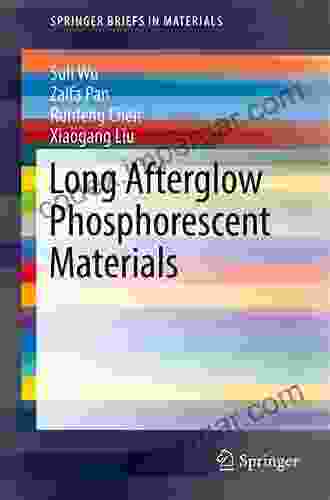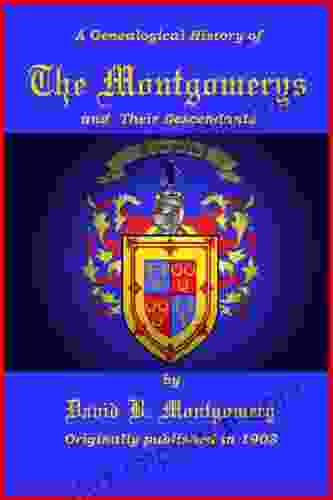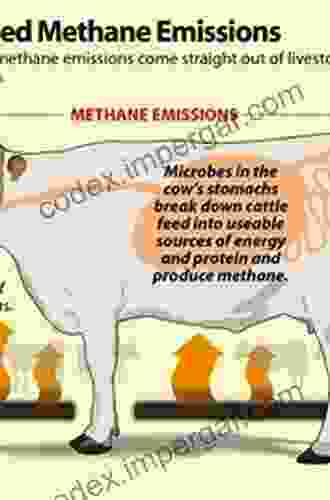Reducing Greenhouse Gas Emissions from Livestock Production: A Comprehensive Guide

The livestock industry is a major contributor to greenhouse gas (GHG) emissions, accounting for approximately 14.5% of global emissions. These emissions primarily come from methane and nitrous oxide, which are produced during the digestion and manure management of livestock. As concerns over climate change continue to grow, there is an urgent need to reduce GHG emissions from livestock production to mitigate its impact on the environment.
5 out of 5
| Language | : | English |
| File size | : | 5552 KB |
| Text-to-Speech | : | Enabled |
| Screen Reader | : | Supported |
| Enhanced typesetting | : | Enabled |
| Print length | : | 300 pages |
This comprehensive guide provides a thorough overview of the key strategies and technologies available to reduce GHG emissions from livestock production. We will explore practical approaches, innovative solutions, and industry best practices that can help farmers, ranchers, and other stakeholders reduce their environmental footprint while enhancing animal welfare and productivity.
Understanding the Sources of GHG Emissions from Livestock
To effectively reduce GHG emissions, it is essential to understand the primary sources of these emissions within the livestock sector. The following are the main sources of GHG emissions from livestock:
- Enteric Fermentation: This is the process by which livestock digest their food, releasing methane as a byproduct. Methane is a potent greenhouse gas with a global warming potential 25 times higher than carbon dioxide.
- Manure Management: The decomposition of livestock manure produces nitrous oxide, a greenhouse gas with a global warming potential 298 times higher than carbon dioxide.
- Feed Production: The cultivation and processing of feed for livestock, including land use changes and fertilizer application, contributes to GHG emissions.
- Transportation: The transportation of livestock and their feed can also result in GHG emissions.
Strategies for Reducing GHG Emissions from Livestock Production
There are numerous strategies available to reduce GHG emissions from livestock production. These strategies can be categorized into the following main approaches:
- Improved Feed Management: Optimizing the quality and composition of livestock feed can significantly reduce methane emissions. This includes using additives such as tannins and essential oils, increasing the use of forages and pasture, and enhancing nutrient utilization.
- Enhanced Manure Management: Proper manure management practices, such as anaerobic digestion, composting, and precision application, can reduce nitrous oxide emissions and improve nutrient utilization.
- Genetic Selection: Selective breeding for animals with lower methane emissions and improved feed conversion efficiency can contribute to overall GHG reduction.
- Innovation and Technology: Adopting innovative technologies, such as methane capture systems and precision feeding, can further minimize GHG emissions and improve production efficiency.
- Lifecycle Assessment: Conducting lifecycle assessments can help identify and mitigate GHG emissions throughout the livestock production chain, from feed production to product consumption.
Case Studies and Examples of GHG Reduction Efforts
To illustrate the practical implementation of these strategies, here are some case studies and examples of successful GHG reduction efforts in the livestock industry:
- Cargill's Methane Reduction Program: Cargill has implemented a comprehensive methane reduction program across its global operations, using a combination of feed additives, manure management techniques, and genetic selection to reduce methane emissions by 30%.
- Teagasc's Low-Emission Beef Production System: Teagasc, Ireland's agriculture and food development authority, has developed a low-emission beef production system that combines improved feed management, grazing practices, and manure management to reduce GHG emissions by up to 20%.
- Novozymes' Bovaer Feed Additive: Novozymes has developed Bovaer, a feed additive that inhibits methane production in the rumen of cattle, reducing methane emissions by up to 30%.
Reducing greenhouse gas emissions from livestock production is essential for mitigating the impact of climate change and creating a more sustainable food system. By adopting the strategies and technologies outlined in this guide, farmers, ranchers, and other stakeholders can significantly reduce their environmental footprint while enhancing animal welfare and productivity.
The transition to lower-emission livestock production requires collaboration and innovation across the entire value chain, from feed producers to retailers and consumers. By working together, we can create a more sustainable future for both the livestock industry and the planet.
5 out of 5
| Language | : | English |
| File size | : | 5552 KB |
| Text-to-Speech | : | Enabled |
| Screen Reader | : | Supported |
| Enhanced typesetting | : | Enabled |
| Print length | : | 300 pages |
Do you want to contribute by writing guest posts on this blog?
Please contact us and send us a resume of previous articles that you have written.
 Book
Book Novel
Novel Page
Page Chapter
Chapter Text
Text Story
Story Genre
Genre Reader
Reader Library
Library Paperback
Paperback E-book
E-book Magazine
Magazine Newspaper
Newspaper Paragraph
Paragraph Sentence
Sentence Bookmark
Bookmark Shelf
Shelf Glossary
Glossary Bibliography
Bibliography Foreword
Foreword Preface
Preface Synopsis
Synopsis Annotation
Annotation Footnote
Footnote Manuscript
Manuscript Scroll
Scroll Codex
Codex Tome
Tome Bestseller
Bestseller Classics
Classics Library card
Library card Narrative
Narrative Biography
Biography Autobiography
Autobiography Memoir
Memoir Reference
Reference Encyclopedia
Encyclopedia Maria De Los Angeles Trigo
Maria De Los Angeles Trigo Bowe Packer
Bowe Packer Brian Lane Herder
Brian Lane Herder Nick Axel
Nick Axel Bruce Bassett
Bruce Bassett Teresa Karlinski
Teresa Karlinski Brian F Martin
Brian F Martin Sean Michael Flynn
Sean Michael Flynn Bryan Douglas Caplan
Bryan Douglas Caplan Bruce Hoffman
Bruce Hoffman Bruce V Jones
Bruce V Jones C N Mindham
C N Mindham Britton W Crosby
Britton W Crosby Brandon Spearman
Brandon Spearman Bruce Ecker
Bruce Ecker Shawn W Flynn
Shawn W Flynn Stephen H Lekson
Stephen H Lekson Gert Jan Van Der Heiden
Gert Jan Van Der Heiden Brian P Levack
Brian P Levack Brian K Burton
Brian K Burton
Light bulbAdvertise smarter! Our strategic ad space ensures maximum exposure. Reserve your spot today!

 Henry David ThoreauLong Afterglow Phosphorescent Materials: Illuminating the Future of...
Henry David ThoreauLong Afterglow Phosphorescent Materials: Illuminating the Future of... Eliot FosterFollow ·8.5k
Eliot FosterFollow ·8.5k Doug PriceFollow ·3.9k
Doug PriceFollow ·3.9k Stuart BlairFollow ·10.1k
Stuart BlairFollow ·10.1k Jeremy CookFollow ·11.9k
Jeremy CookFollow ·11.9k Corey HayesFollow ·3.8k
Corey HayesFollow ·3.8k Emmett MitchellFollow ·10.7k
Emmett MitchellFollow ·10.7k Isaac MitchellFollow ·12.9k
Isaac MitchellFollow ·12.9k Guy PowellFollow ·18.7k
Guy PowellFollow ·18.7k

 Gary Cox
Gary CoxUnlocking Meaning and Purpose in Life: An Exploration of...
In an increasingly...

 Eric Hayes
Eric HayesMemoirs of the Early Pioneer Settlers of Ohio Illustrated
A Window into the Lives of Courageous...

 J.R.R. Tolkien
J.R.R. TolkienThe Montgomerys and Their Descendants: A Saga of Courage,...
Prepare to be...

 Avery Simmons
Avery SimmonsThe Rifle Musket: The Dawn of Modern Infantry Warfare
: The rifle musket, a revolutionary...

 Jesse Bell
Jesse BellUnlock the Power of Excel with VBA and Macros: A...
Microsoft Excel is a powerful spreadsheet...
5 out of 5
| Language | : | English |
| File size | : | 5552 KB |
| Text-to-Speech | : | Enabled |
| Screen Reader | : | Supported |
| Enhanced typesetting | : | Enabled |
| Print length | : | 300 pages |












